Kent
THE OLDEST ENGLISH CHURCH ∗ OLDEST SCHOOL
∗ BIGGEST NORMAN CRYPT ∗ PRIMATE OF ALL ENGLAND ∗ MAIDSTONE ∗ FIRST IN FLIGHT ∗ STAPLE DRINK
∗ COCKLES AND WINKLES
Christ Church Gate which leads to the Mother Church of the worldwide Anglican Community.
KENT FOLK
Sir John Spilman ∗ William Stevens ∗ King Stephen ∗ Augustus Pugin ∗ Kenneth Clark ∗ Richard Trevithick ∗ Mick Jagger ∗ Keith Richards
Kingdom of the Cantii
Kent is England’s oldest county, first recorded by the Romans in 55BC as the Celtic kingdom of the Cantii – the Celtic root ‘canto’ means edge. It was also the first of the Anglo-Saxon kingdoms.
Canterbury
CANTERBURY, the Roman city of Durovernum, has long been the very heart of English Christianity, possibly since the days of the Romans.
ST MARTIN’S CHURCH, set on a hill just outside the city walls, is THE OLDEST CHURCH IN ENGLAND IN CONTINUOUS USE. It was mentioned by the Venerable Bede, who wrote, ‘There was on the east side of the city a church dedicated in honour of St Martin; built of old while the Romans were still inhabiting Britain.’ It is not clear if the church was used for Christian worship by the Romans, or whether it was a pagan temple that was later converted into a church. What is not in doubt is that St Martin’s was where Ethelbert of Kent, the first Saxon king to be converted to Christianity, was baptised by Augustine, first Archbishop of Canterbury, in AD 597.
In 598 Augustine founded a monastery nearby, now THE OLDEST MONASTIC SITE IN ENGLAND, and in 600 he established the KING’S SCHOOL AT CANTERBURY, THE FIRST AND OLDEST ENGLISH SCHOOL.
Work began on the cathedral at Canterbury in 1070. The crypt of this building survives more or less intact and is THE LARGEST NORMAN CRYPT IN THE WORLD. The murder of Thomas à Becket in the cathedral in 1170 attracted pilgrims to Canterbury from all over the world, making it England’s pre-eminent shrine, and the wealth the visitors brought helped to finance the glorious structure we see today. The pilgrims also inspired the first great work in the English language, Geoffrey Chaucer’s Canterbury Tales.
Since the Reformation, Canterbury Cathedral has been the Mother Church of the worldwide Anglican community, which consists of 70 million Anglicans in 160 different countries. The head of the Anglican Church is the Archbishop of Canterbury, who is also Primate of All England.
EDWARD THE BLACK PRINCE, eldest son of Edward III and father of Richard II, is buried in Canterbury Cathedral. He died one year before his father and was thus the first English Prince of Wales not to become king.
Also buried in the cathedral are Henry IV and his Queen, Joan of Navarre. Henry, the only monarch to be buried at Canterbury, wished to lie near to the shrine of Thomas à Becket.
Maidstone
MAIDSTONE, the administrative centre of Kent, lies in the middle of the county on the River Medway, which runs from north to south and divides Kent into east and west. From east of the Medway come the ‘Men of Kent’, while west of the river they are ‘Kentish Men’.
Born in Maidstone was the political journalist and philosopher WILLIAM HAZLITT (1778–1830), who has been described as the first English art critic, the first English theatre critic and the greatest English expert on the writings of William Shakespeare.
Anthony Woodville
In the middle of the 15th century, Anthony Woodville, Earl Rivers, lived at Mote Park in Maidstone, now a cricket ground. Brother-in-law to Edward IV, Woodville was made guardian to Prince Edward, the Prince of Wales, and when King Edward IV died in 1483, Woodville accompanied the new King Edward V from Ludlow, where they had been living, to London for his coronation. On the way they were ambushed by men sent from Edward’s uncle, the Duke of Gloucester. Woodville was beheaded, and Edward was taken off to the Tower of London, where he was joined by his brother Richard. Neither of them was ever seen again, and the Duke of Gloucester ascended the throne as Richard III.
Anthony Woodville’s translation from the French of The Sayings of the Philosophers, printed by William Caxton in 1476, was THE FIRST BOOK EVER PRINTED IN ENGLAND.
DR BEECHING (1913–85), Chairman of British Rail and architect of the infamous railway closures known as the Beeching Axe, was born in Maidstone.
Percy Pilcher
1867–99
It could so easily have been the quiet village of EYNSFORD, in the Darent valley of Kent, that achieved immortality by hosting man’s first powered flight, rather than Kitty Hawk in North Carolina.
Sayings of William Hazlitt
A hair in the head is worth two in the brush.
I like a friend the better for having faults one can talk about.
The love of liberty is the love of others, the love of power is the love of ourselves.
The most learned are often the most narrow-minded.
The River Darent cuts through the North Downs, and the hills around Eynsford are perfect for gliding. In 1896, in a big shed by the road to Upper Austin Lodge (now a golf course), aviation pioneer PERCY PILCHER built a glider constructed mainly from bamboo and weighing less than 50 pounds (23 kg), which he called the Hawk. He spent many hours gliding the Hawk off a hilltop named the Knob, experimenting with and refining techniques for flying through the air. Unaided he could glide for 100 yards, and with the aid of a pulley he could soar for over a quarter of a mile (0.4 km).
The next step was to build a plane with an engine and so achieve powered flight. For this Percy designed a four-horsepower engine and a propellor, but the real problem was to create a new wing that could provide enough lift for the combined weight of engine, pilot and plane. Increasing the wing area also increased the weight, requiring more lift and hence a bigger wing, and so on. A friend of Percy’s, Octave Chanute, was making some progress with two small, light wings stacked one on top of the other, making a biplane, but Percy went one better and came up with a triplane, with three sets of wings.
On paper, the triplane worked perfectly. Now all Percy needed was finance, so in 1899 he took the Hawk to a show at Stanford Hall in Leicestershire, to give a gliding demonstration in the hope of attracting sponsorship. It was raining heavily, but Percy did not want to disappoint the crowd, so he went ahead with the flight despite the conditions. He reached a height of 30 ft (9 m), but then the tail collapsed, the ropes perhaps affected by the wet, and he plummeted to the ground, dying from his injuries two days later.
In 2003 an aviation historian called Phillip Jarrett tracked down the designs of Percy Pilcher’s triplane and had a replica constructed. Remarkably, it achieved a controlled flight of one minute and 26 seconds – considerably longer than the Wright brothers managed on their celebrated first flight in 1903. This seems to suggest that, had it not been for the rain, Percy Pilcher might have become the first man to achieve powered flight – and Eynsford might now be in the history books instead of Kitty Hawk.
Ale
THE OLDEST BREWERY IN ENGLAND is the SHEPHERD’S NEAME BREWERY in FAVERSHAM, which opened in 1698. Faversham already had a tradition of brewing going back to the 12th century when King Stephen founded a Benedictine abbey in the town – monasteries, as places of hospitality for pilgrims and travellers, were great brewers and the pure spring water of Faversham combined with the local barley crop produced exceptional ale.
Ale, being the product of malted grains, is the liquid equivalent of bread and has been the staple diet of the English since Roman days. In the days when water was quite likely to be polluted, and food was scarce, ale was a cheap and satisfying source of nutrition.
In the 15th century hops were added to ale to make beer, after the Flemish and Dutch custom, and hops have since become a traditional Kent crop and a familiar sight, along with oast houses and their distinctive conical roofs, which were built to house the oasts or kilns for drying the hops.
The term ‘warm beer’ refers to the fact that traditional English beers are served at room temperature, unlike the Continental ‘lager’ beers, which are served chilled.
Cockles and Winkles
THE WORLD’S FIRST REGULAR STEAM PASSENGER RAILWAY, which opened on 3 May 1830, ran from Canterbury to Whitstable and was known as THE COCKLE AND WINKLE LINE. Its purpose was to connect Canterbury to the coast, because the original outlet, the River Stour, had silted up.
A significant innovation on the Cockle and Winkle Line was THE FIRST TUNNEL EVER BUILT FOR A PASSENGER RAILWAY. There was no need for a tunnel, but the members of the Canterbury Committee responsible for the railway were not about to spend all that money and not have a tunnel to show for it. Civic pride demanded it. ‘What, no tunnel?’ the Chairman had expostulated when shown the original plans. ‘We must have a tunnel!’
And so George Stephenson was summoned, the railway was diverted, and an 800-yard tunnel was driven under Tyler’s Hill. At the Whitstable end the tunnel had to be very narrow, and this restricted the width of the carriages that could be used, which proved a major obstacle to the further development of the line in later years.
The Cockle and Winkle line was closed for passengers in 1930 and for freight in 1952. The tunnel entrances can still be seen by walking along the route of the disused railway.
Well, I never  knew this
knew this
about
KENT FOLK
Sir John Spilman
C. 1535–1604
SIR JOHN SPILMAN started THE FIRST COMMERCIALLY SUCCESSFUL PAPER MILL IN ENGLAND, at Dartford in 1586. He somehow managed to secure a monopoly for the production of highly sought-after, good-quality white paper, while other paper mills were allowed to make only cheap brown paper, and so completely did Spilman capture the market that white paper only became widely available after his death in 1626.
Sir John Spilman, who is buried in Dartford’s Holy Trinity Church, is also thought to have been responsible for introducing the lime tree to England.
A poet called Thomas Churchyard wrote a long-winded poem about Spilman’s mill, the first description of paper-making ever to appear in print.
There it is stamped and washed as white as snow
Then flung on frame and hanged to dry, I trow
Thus paper straight it is to write upon
As it were rubbed and smoothed with slicking stone
William Stevens
1732–1807
Nobody is buried in the churchyard at OTHAM, just outside Maidstone. Nobody is, in fact, WILLIAM STEVENS, a writer and philanthropist who made a fortune from the hosiery trade, never married and gave away most of his money to charities. He took the pen-name ‘Nobody’, saying of himself, ‘as a member of society he is nobody, neither father, husband, uncle or brother’.
In 1800 he founded a charitable dining club called The Society of Nobody’s Friends, with 50 members, half churchmen, half laymen, who met three times a year. The club still exists and includes distinguished peers, judges, bishops and writers who get together, without publicity, to discuss the topics of the day and toast the Immortal Health of Nobody. When a member dies, a new one is elected to keep the membership at 50, and the new member must make a speech at his first dinner. The membership is kept secret, but you must be a Somebody to be Nobody’s friend.
KING STEPHEN and his wife MATILDA were buried in Faversham Abbey, but when their tomb in the abbey church was excavated in 1964 there were no remains to be found. It is thought that the bones were thrown into Faversham Creek at the Dissolution of the Monasteries.
AUGUSTUS PUGIN (1812–52), the architect, who designed the interior of the Houses of Parliament, and the clock faces of ‘Big Ben’, is buried in St Augustine’s Church in RAMSGATE. Next door is The Grange, a house he designed and built himself, now owned by the national Trust.
KENNETH CLARK, Baron Clark of Saltwood (1903–83), historian and presenter of the BBC television series Civilisation, is buried in the churchyard at Saltwood, beside his home SALTWOOD CASTLE. This had been the childhood home of journalist BILL DEEDES (1913–2007), the only Englishman ever to be both a Cabinet Minister and the editor of a major newspaper (the Daily Telegraph), and the recipient of Denis Thatcher’s fictional ‘Dear Bill’ letters. Saltwood Castle is where the four knights who murdered Thomas à Becket, in Canterbury Cathedral in 1170, met to plot their evil deed.
RICHARD TREVITHICK, one of the greatest inventors of all time and builder of the world’s first railway steam engine (see Cornwall), is buried in Dartford, in an unmarked pauper’s grave.
Two Rolling Stones, MICK JAGGER and KEITH RICHARDS, were both born in Dartford in 1943.


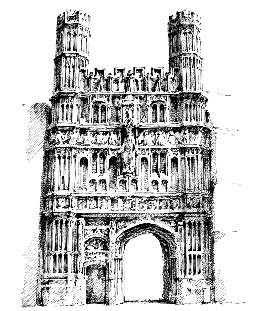


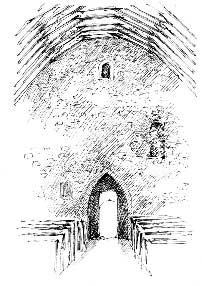
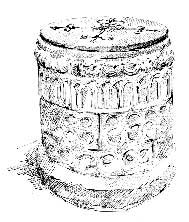
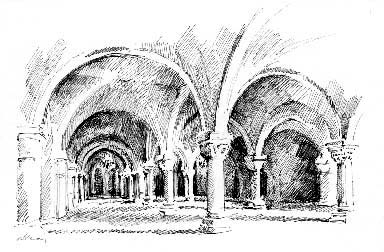



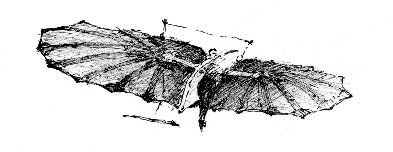


 knew this
knew this